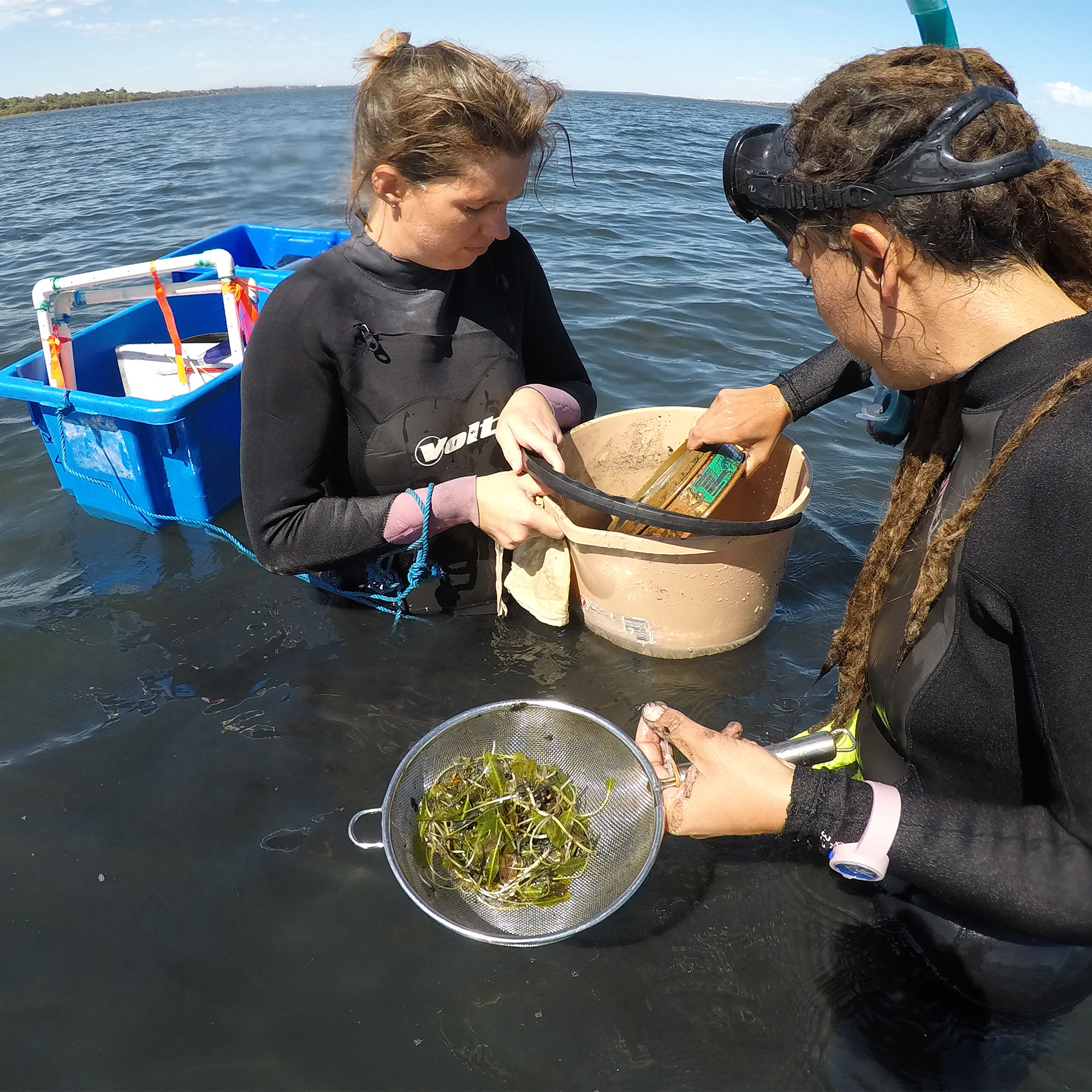Seagrass
What is seagrass?
Seagrass or seaweed?
Hover your cursor over the image to find out about features of a common seagrass.
Why is seagrass important?
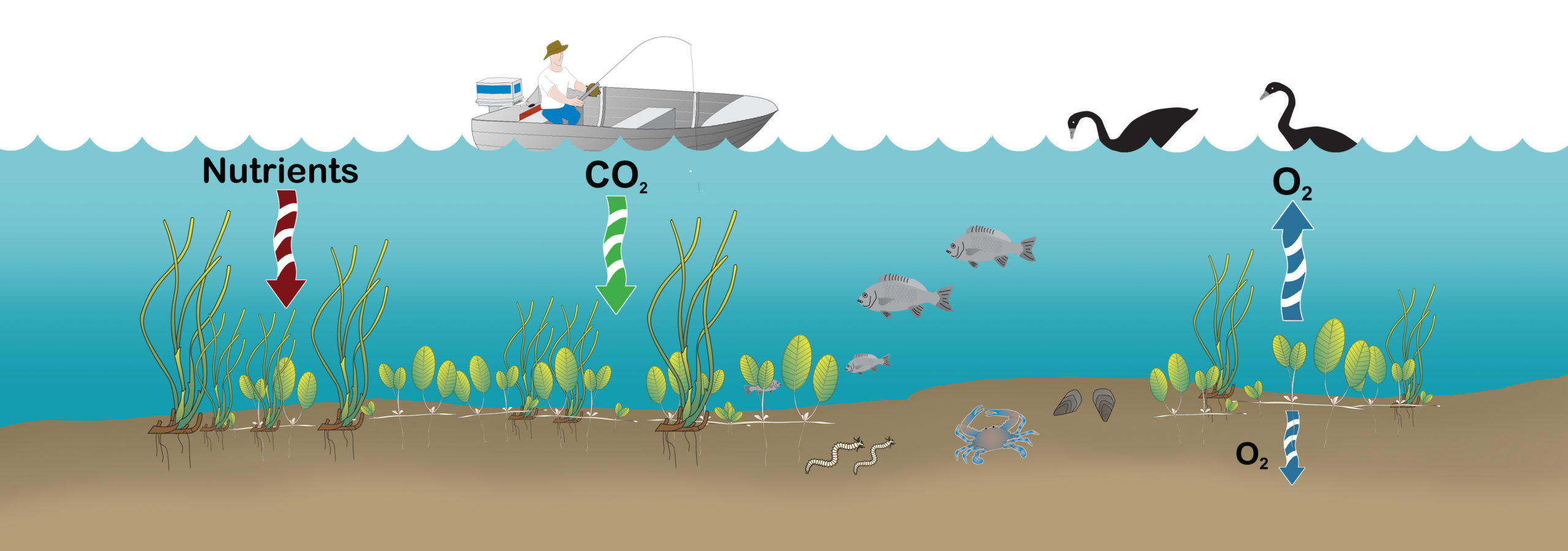
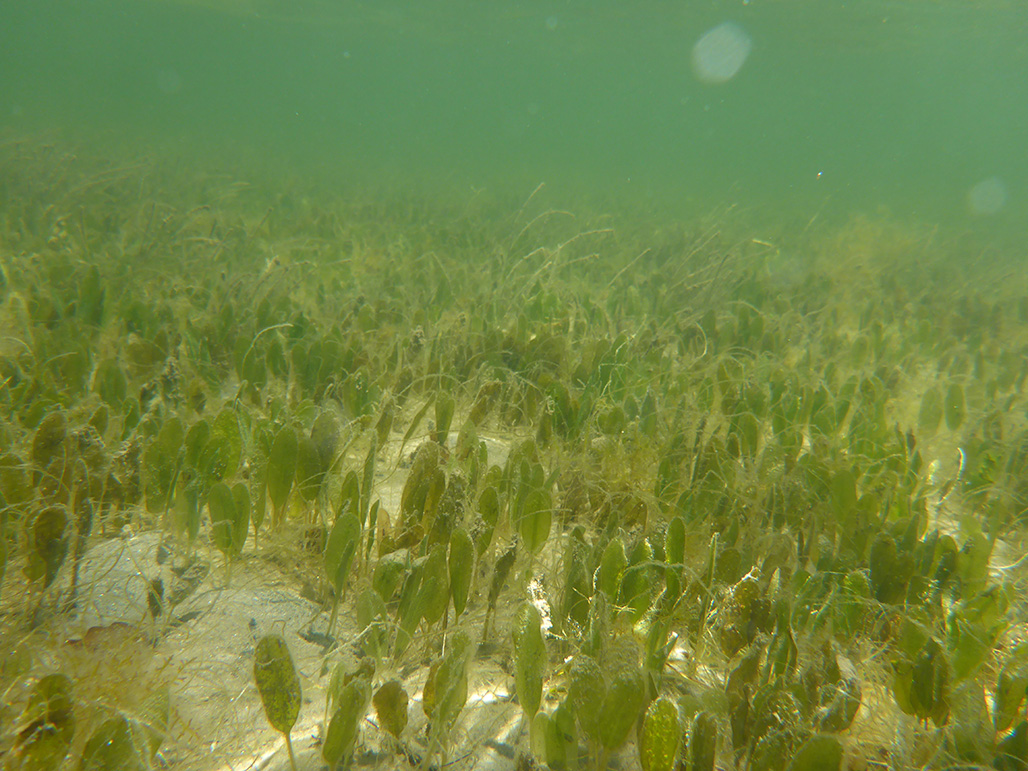
Halophila
Dominant in:
- Leschenault Estuary
Also found in:
- Peel-Harvey Estuary
Found in a range of environments from shallow to deep water.
Tolerates low salinity through to saltier than seawater.
Forms a carpet like meadow.

Ruppia
Dominant in:
- Vasse-Wonnerup Wetlands
- Wilson Inlet
- Hardy Inlet
- Peel-Harvey Estuary
Also found in:
- Leschenault Estuary
- Oyster Harbour
Found in fresh water through to water saltier than the sea.
Tolerates fresh water and seeds need it to initiate growth.
Can grow over 1 m tall.
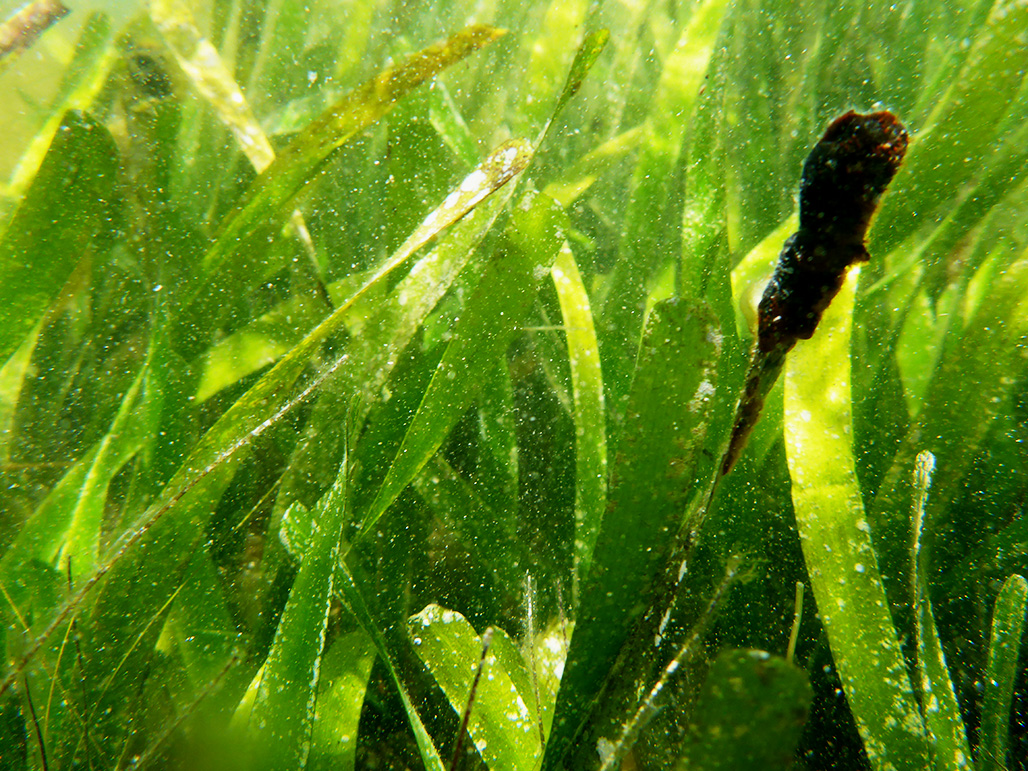
Posidonia
Dominant in:
- Oyster Harbour
Found in sheltered, marine environments.
Takes approximately 10 years for seed to grow to mature plant.
Can grow up to 1 m tall.
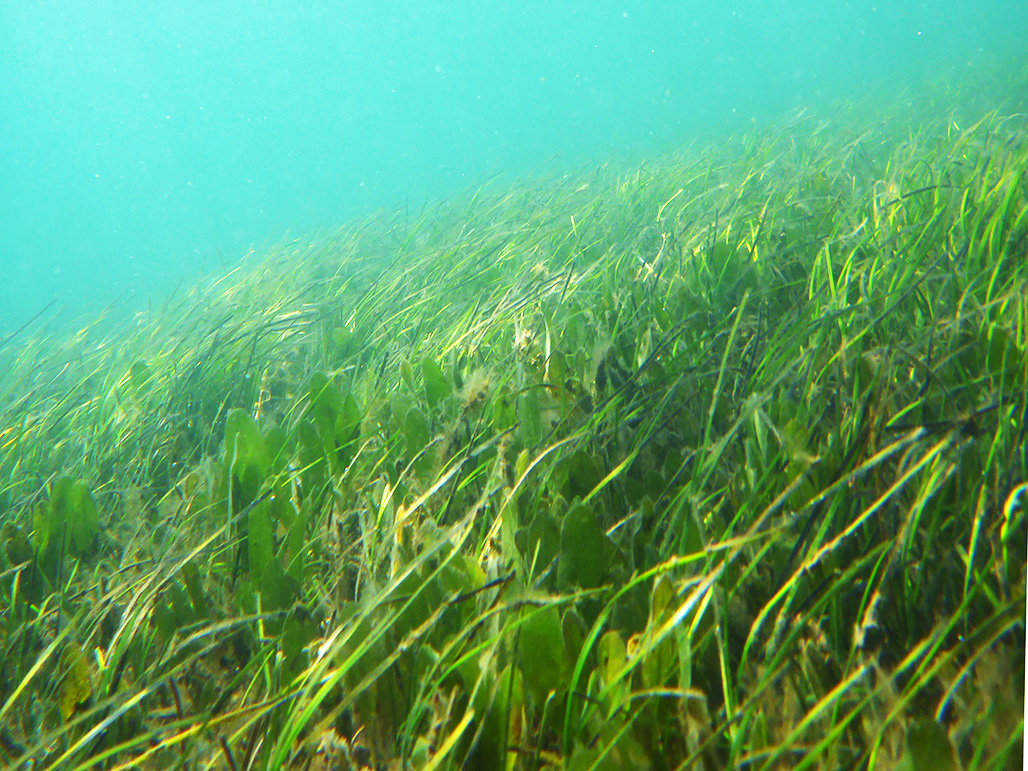
Zostera
Found in:
- Leschenault Estuary
- Peel-Harvey Estuary
Found in sheltered, shallow marine environments.
Has short strap‑like leaves.
How and why do we monitor seagrass?
Seagrass condition and distribution throughout an estuary can provide important information about the overall health of the estuary and the quality of water entering it from streams, creeks, rivers and drains.
To gain a comprehensive understanding of seagrass health, we look at where different species are found (broad scale), how densely it is growing (broad scale), how it grows (fine scale), and how fast it might recover from a damaging event (fine scale).
For broad‑scale measurements, we use an underwater camera to capture information at up to hundreds of sites in a single estuary. Fine‑scale measurements are taken at three to eight sites in an estuary where scientists measure meadow characteristics, growth rates, seed banks and take samples for further analysis.

